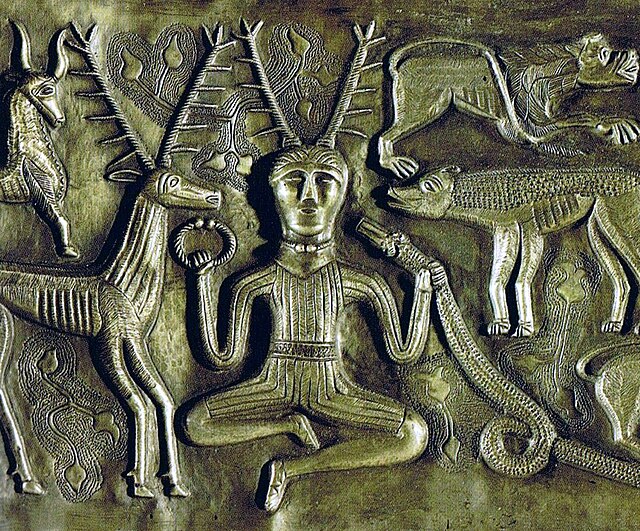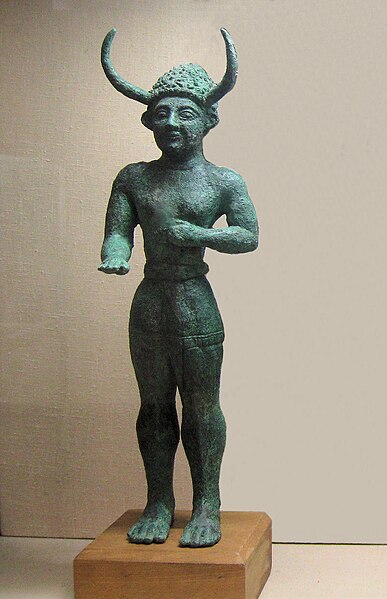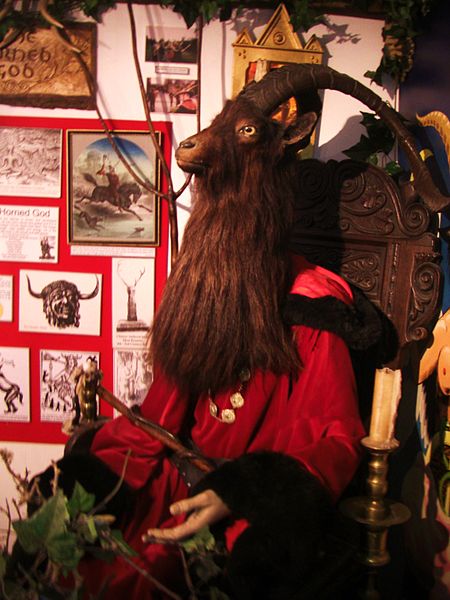The Horned God is one of the two primary deities found in Wicca and some related forms of Neopaganism.
The term Horned God itself predates Wicca, and is an early 20th-century syncretic term for a horned or antlered anthropomorphic god partly based on historical horned deities.
The "Cernunnos" type antlered figure on the Gundestrup Cauldron
Altar statues of the Horned God and Mother Goddess crafted by Bel Bucca and owned by the "Mother of Wicca", Doreen Valiente
Bronze figurine of a "Horned God" from Enkomi, Cyprus
A red deer headdress from Star Carr. Many of the 20 other headdresses have more complex sets of antlers.
Wicca, also known as "The Craft", is a modern pagan, syncretic, earth-centered religion. Considered a new religious movement by scholars of religion, the path evolved from Western esotericism, developed in England during the first half of the 20th century, and was introduced to the public in 1954 by Gerald Gardner, a retired British civil servant. Wicca draws upon ancient pagan and 20th-century hermetic motifs for theological and ritual purposes. Doreen Valiente joined Gardner in the 1950s, further building Wicca's liturgical tradition of beliefs, principles, and practices, disseminated through published books as well as secret written and oral teachings passed along to initiates.
Wiccan jewelry, showing a pentacle necklace, a pentacle ring, and a torc. A pentacle is used by many adherents of Wicca. The pentacle is generally placed on a Wiccan altar to honour the elements and directions.
Altar statues of the Horned God and Mother Goddess crafted by Bel Bucca and owned by the "Mother of Wicca", Doreen Valiente
Sculpture of the Horned God of Wicca found in the Museum of Witchcraft in Boscastle, Cornwall
Athame, ritual knife or dagger used in Wiccan practices







